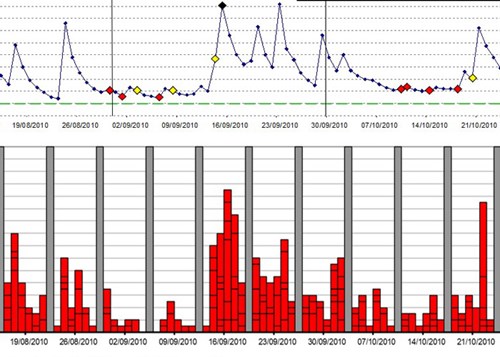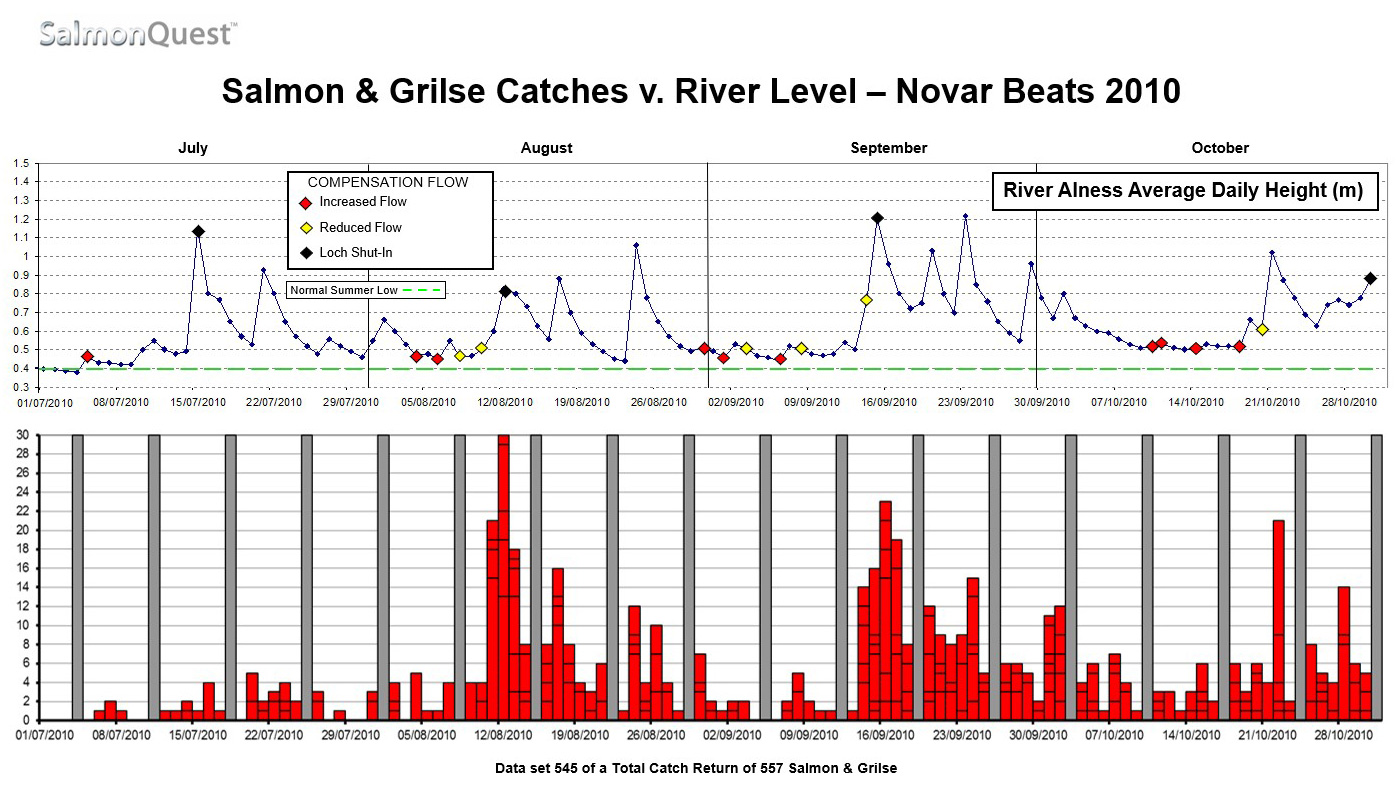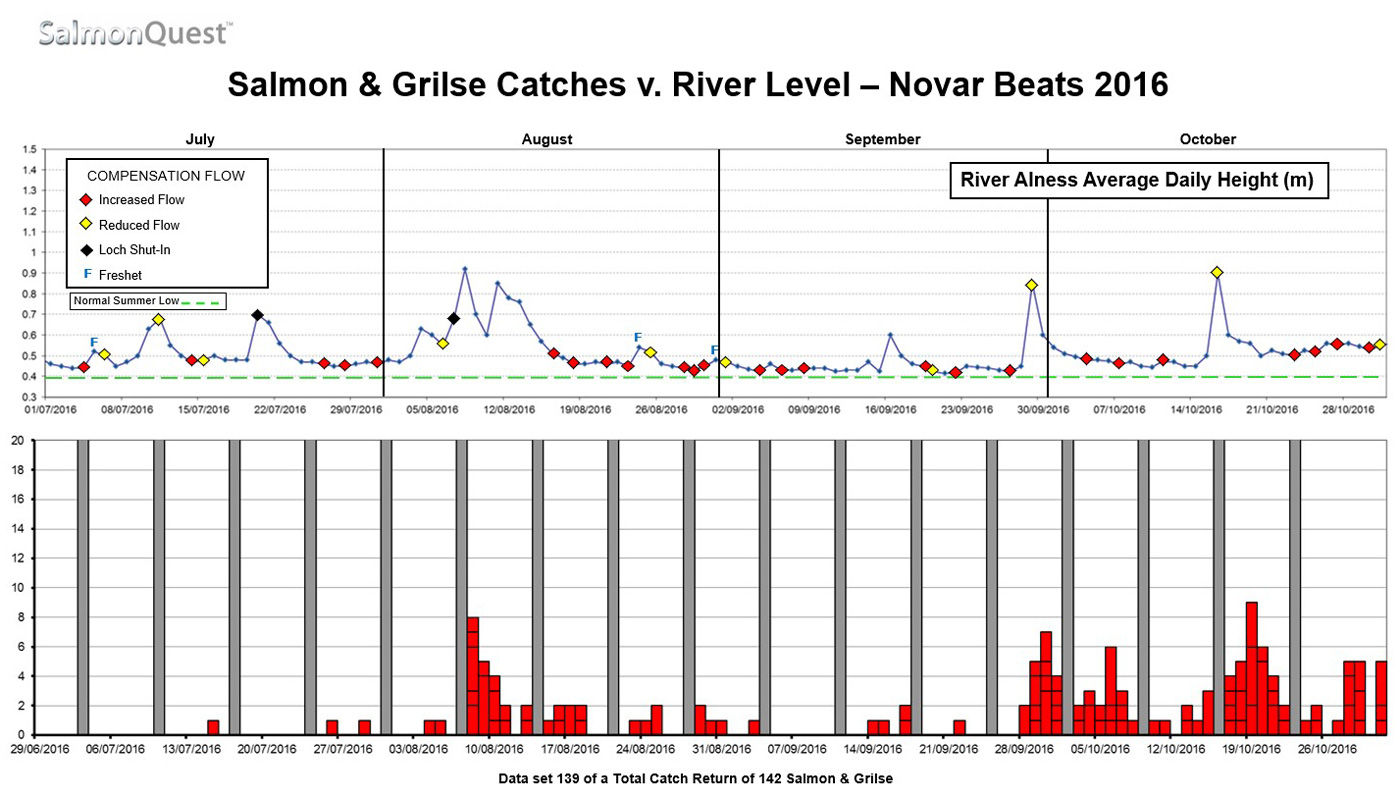
Salmon Catches & River Levels - 1
Roger Dowsett
Added on 15 July 2025
We have today updated the SEPA Gauge map layer to include a new data field for each pin - 'base level'. The purpose of this 2-part blog is to highlight how river levels are crucial to salmon angling success, and the significance of knowing minimum or base levels for individual gauging stations, in interpreting river level graphs.
Salmon Catches v. River Levels
You’ll often hear anglers and non-anglers talking about luck in salmon fishing. Luck on the day generally has a minimal impact. When you book your fishing months in advance, the real 'luck’ is getting favourable river conditions for your visit. This is especially the case on spate rivers.
Forget atmospheric pressure, pheromones or even fly pattern. It's an uncomfortable truth, but assuming there are fish in the river, the single most important factor to success, is river flow rate, which equates to river level.
This won’t come as a revelation to many, but just how dependent catches are on river level may still surprise.
In 2017 when I was managing the Novar Fishings on the River Alness, the Scottish Government proposed downgrading the river’s status for the 2018 season from Category 1 to 3. Their assessment model was based on catches, with a crude adjustment made for river flow using mean monthly flow data, which was unsuitable for spate rivers (and still is).
We submitted an appeal demonstrating the model did not adequately consider the timing & lack of rainfall and fishing effort on catches. We were successful, getting the river reclassified as Category 2.
Below are a couple of graphs that I included: one from 2010, a wet season; the other from 2016, a very dry season, and the last year considered by Marine Scotland in determining conservation status.
There is a strong correlation between catches and river level in both instances, the main discrepancy being in July, but in both years angling effort was very low then. It’s also apparent just how few catches there are at low river levels.
In a wet 2010 season, of the 545 salmon & grilse caught during between July to October, 447 fish (82%) were caught when the river level was higher than +15 cm above summer low (53 fishing days, average 8.4 fish/day), and only 5 fish were caught (0.9%) when the river level was below +5 cm.
The 2016 season by contrast had lower background water levels and fewer and smaller spates. Of the 139 salmon & grilse caught in the main season from July to October, 65 fish (47%) were caught when the river level was higher than +15 cm (just 21 fishing days, average 3.1/day), and 6 fish (4.3%) were caught over the 18 days that the river level was below +5 cm.
Fishing a spate river at or near, ‘summer low’ appears statistically, very unlikely to produce catches. While the effect may be less pronounced when fishing larger rivers at similar levels, it is still unlikely to be very productive.
River height v. flow rate will vary from river to river, but in my experience, it seems that +15 cm (+6 in) to +60 cm (+2ft) above summer low is the most productive range for salmon fishing on most Highland rivers. If I could pick conditions myself, it would be a river dropping slowly after a spate, and at around +40 cm (+ 1ft 4in).


